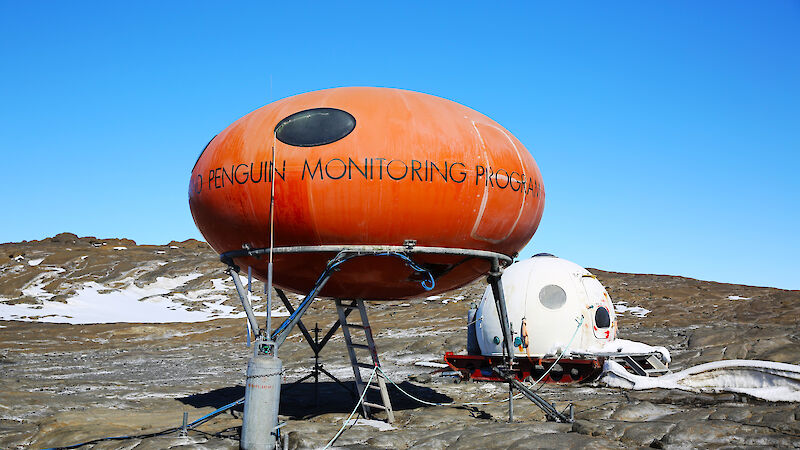Adélie penguins are top-level Antarctic predators that eat mainly Antarctic krill. AAD scientists are studying how much krill penguins and their chicks need each year.
The Antarctic environment experiences natural changes from year to year. These variations can affect how krill are distributed, which in turn can affect the penguins. To look at the big picture, this monitoring is happening over many years.
A long term monitoring program studying Adélie penguins has been run by Australian scientists since 1990. This study is located at Béchervaise Island (67°35’S, 62°48’E), East Antarctica. Other nations carry out similar programs at other locations around the continent.
Together, the programs are part of the international CCAMLR Ecosystem Monitoring Program (CEMP).
CCAMLR has several major aims. One is to ensure that the human harvest of krill does not adversely affect any element of the Southern Ocean (Antarctic) Ecosystem. As Adélie penguins are large consumers of krill, we need to determine how our harvests will affect them. Our research will help answer the following questions:
- Does the feeding range of the penguins overlap with the krill fishery in time and space?
- What are the penguins’ normal levels of breeding success and food consumption?
- How much natural variation in diet and breeding success exists from year to year? (long-term monitoring)
- What factors are responsible for these natural variations?
- How much krill can be fished without affecting the animals and birds that depend on it?
The information we gain on the Adélie penguins is used in the management of the krill fishery. In turn, this enables us to help protect the penguins from loss of their major food source.

